Last updated on May 20th, 2023
The lives of ducks and humans have intertwined for thousands of years, as proven by Stone Age cave paintings and Ancient Egyptian literature. We know them as stout birds that love water, swimming to bathe, drink, and feed. It helps them stay calm and healthy. Dangers lurk in the wild, but they have means of survival. With proper care, they can also thrive in captivity and boost economies. Read on to learn 50 interesting facts about ducks, including their origins, behaviors, physical attributes, and cultural significance.
Origins
1. Asteriornis, also called the Wonder Chicken, lived 66.7 million years in the past along with the dinosaurs. It is the oldest known waterfowl ancestor, with features comparable to modern ducks and chickens. It had a small body and long slender legs suited to shorelines.
2. The name (Asteriornis) comes from the Greek titan goddess of shooting stars, Asteria. According to myths, the goddess escaped pursuit by transforming into a quail. Scientists chose this label to highlight its survival from the asteroid impact that sparked dinosaur extinction.
3. Vegavis is a bird species that lived 66.5 million years ago on the Antarctic coast. Its skeleton suggests it could fly and dive using its feet for propulsion, just like ducks. However, its sound box resembled those of geese and likely made honking noises.
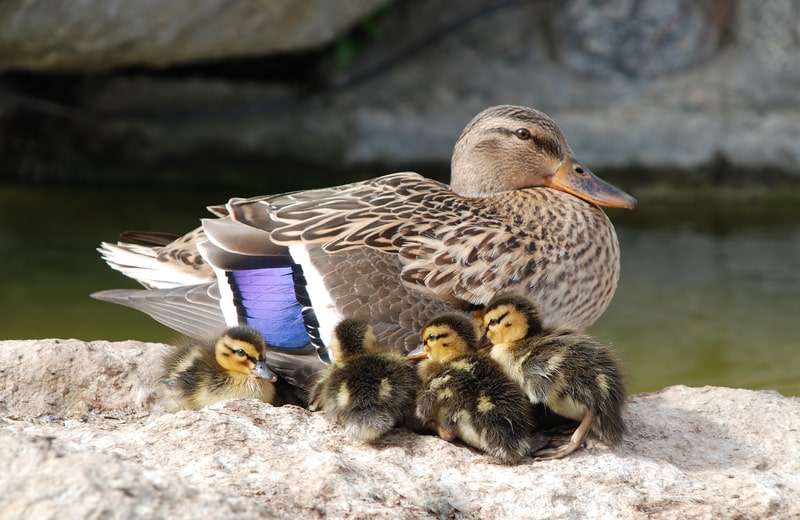
4. Presbyornis Pervetus fossils date back 55 million years when they walked along the lake edges of Europe and North America. Distinctive features include a long neck, duck-like head, tall legs, and webbed feet. These birds nested in large colonies and foraged like dabbling ducks, possibly with thousands in a flock.
5. Dromornis Planei is also known as the Demon Duck of Doom. This ancient flightless bird stood 8 feet tall and weighed over 500 pounds. Its head was the size of a horse, with a deep curved bill. It lived near meandering rivers in Australia, constantly on the defensive due to hungry crocodiles.
Anatomy
6. Ducks have a long and broad body. Species that dive for food tend to have a more rounded figure to reduce drag when swimming. They have a pronounced neck, but not as long as swans and geese.
7. Most ducks have a broad bill with a body skeleton and a fleshy covering. Inside the mouth is a comb-like structure called a pecten. It filters water while retaining food as they swim. Species that go fishing have longer duckbills to hold their catch.
8. Duck legs, set far back on the body, are covered in scales for protection. Species that spend more time in water have their legs near their tails. Their powerful muscles provide propulsion.
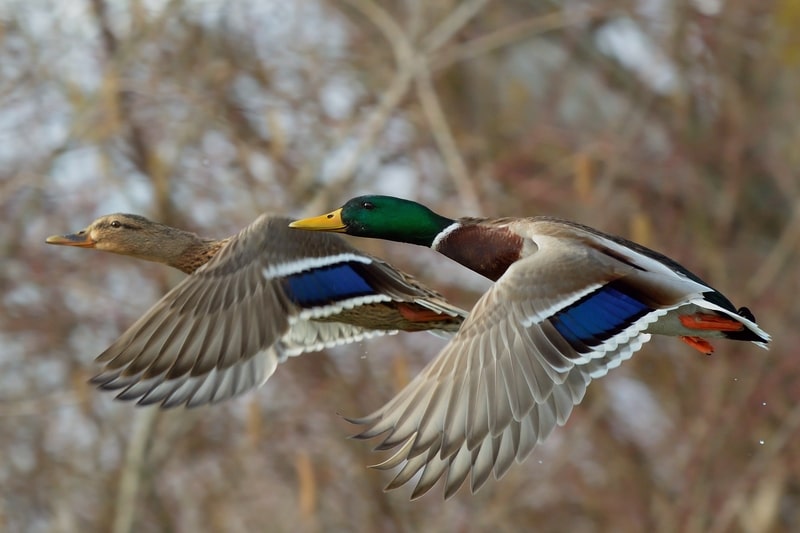
9. Duck wings are short but capable. When they fly, they must flap these continuously at a rapid pace to remain airborne. It is only possible for highly developed appendages. Some species cannot fly, and a few rarely do so despite having the ability.
10. Male ducks, also known as drakes, are larger and more colorful than the females, called hens. They use their flashy plumage to attract mates, after all. They also have a curled feather near the tail to set them apart.
Predators
11. Ducks are naturally curious creatures. They keep their distance when they see a predator in the wild, like a dog or a fox. However, they also tend to follow it. Human hunters often use this behavior to catch these birds.
12. Ducklings can’t fly. Their limited movement makes them easy prey for predatory birds like herons, hawks, and owls. Crocodiles, pikes, snapping turtles, and other aquatic hunters may also feed on them if they get in the water.
13. Land-based predators may raid duck nests and catch the brooding female by surprise. These natural enemies include red foxes, badgers, skunks, minks, raccoons, and coyotes. Farmers and pet owners must build duck houses enclosed in welded mesh to keep out unwanted visitors.
14. Ducks become fast fliers upon reaching adulthood, helping them evade terrestrial and aerial predators. Adults are generally safe from most animals, allowing them to reproduce in large numbers. The fast and powerful Peregrine falcon is an exception since it can chase them down with a maximum speed of 320 kph.
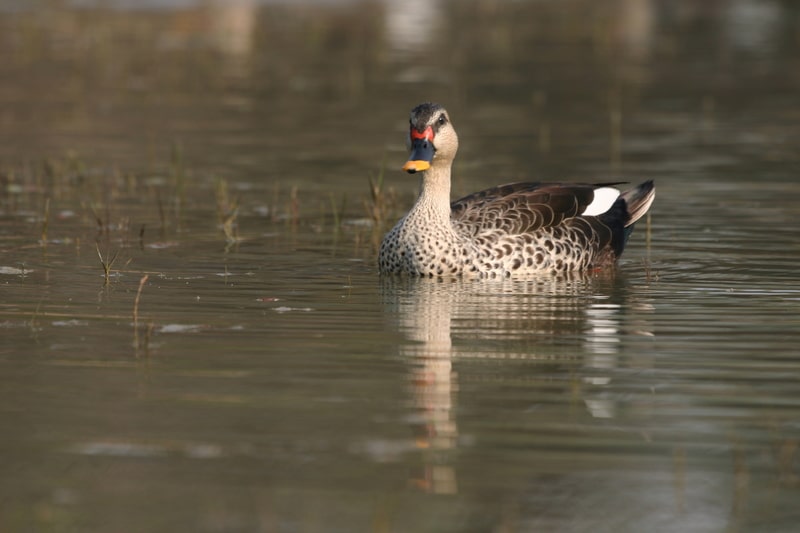
15. Ducks lose their aerial advantage once they settle on the water. Big fish can overpower them in an ambush, like the North American muskie that can span as much as 6 feet and weigh up to 30 kg.
Feeding
16. Ducks are omnivores. They can eat grass and aquatic plants. They can also consume fish, worms, insects, amphibians, and mollusks. It depends on what is available in their environment, with each species adapting to local conditions.
17. Dabbling ducks don’t dive. They remain on land or the water surface. They only reach as deep as their bodies can touch without entirely submerging, allowing them to trap food in their comb-like mouths.
18. Species of diving and sea ducks can forage much deeper underwater. Their heavier bodies allow them to sink easier, but it comes at the cost of flying efficiency. They eat more aquatic food because they cannot walk as well on land.
19. Conservationists are asking people to stop feeding bread to ducks, especially when these are on the water. Uneaten crumbs cause algal blooms, bacterial growth, and rat infestations. The practice may also lead to poor health and fatal deformities. Chips, crackers, popcorn, biscuits, and sweets are also dangerous.
20. People may still feed ducks with healthier alternatives in reasonable portions. Food items considered safe for these birds include oats, corn, peas, rice, birdseed, grapes, duck pellets, chopped greens, chopped vegetable peels, mealworms, and earthworms.
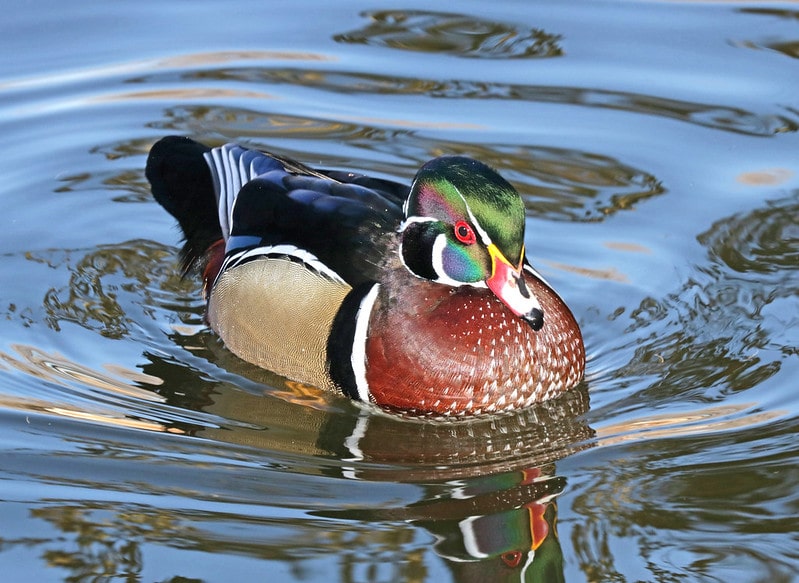
Breeding
21. Ducks are serial monogamists. Most of them stick to one partner at a time. However, their partnerships often last for only a year before going their separate ways. In larger species, pair bonds may extend for several years.
22. In general, there is only one breeding season per year. It falls under the most favorable conditions in their area, typically during the spring or summer. In tropical regions, ducks breed during the wet season.
23. Like other birds, ducks make their nests before breeding. Many prefer sites near the water yet covered in vegetation. They may also use existing holes in trees. Most will make do with what they find, like wood piles, hay stacks, roof gardens, large flower pots, enclosed courtyards, and boathouses.
24. Female ducks use leaves and grass to build nests, often making these more comfortable by plucking down feathers from their breasts. Mothers need a lot of rest after laying eggs. Males must stand guard throughout the recovery.
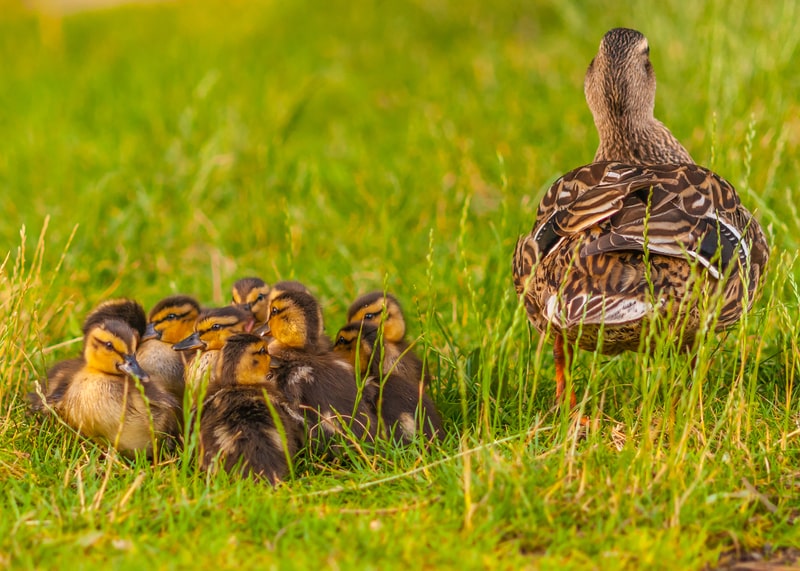
25. Ducklings may become orphans if they hatch later than the rest of their brood. Their mother may abandon the nest early to take the faster hatchlings to water. Sick or defective ducklings may also lack the strength to follow.
Behaviors
26. After breeding, ducks replace their worn-out feathers in a month-long process called molting. They temporarily lose flight, making them vulnerable to predators. They must stay in a safe place with ample food during this period.
27. Once ducks develop new feathers, the molt is complete, and they regain their ability to fly. Those living in temperate and arctic regions try to avoid winter conditions by migrating to warmer places. Meanwhile, tropical ducks usually stay put.
28. Most duck species do not quack. The familiar sound comes from females of the genus Anas, with the males producing a raspier version. Other ducks communicate through whistlings, gruntings, yodeling, and cooing. Contact calls are soft, while display calls are loud.
29. Unpaired male ducks can become aggressive and force females to mate with them. The latter wants to choose the father of their offspring and thus rejects them, leading to violent struggles that may result in injury or drowning.
30. Female ducks evolved a corkscrew-shaped vagina that acts like a medieval chastity belt. It spirals in the opposite direction of the male penis, preventing the entry of unwanted suitors. Inside are pockets where sperm can die. Thus, even if forced mating occurs in 40% of encounters, only 2-5% produce offspring.

Hunting
31. Duck hunting is an ancient practice, possibly dating back 11,000 years. Early human settlements in California had duck bones in their waste dumps, including the now-extinct flightless sea ducks.
32. In the lower Ohio River valley, inhabitants captured ducks for food in significant numbers during the Holocene epoch. They timed their hunts to coincide with the seasonal migrations for high efficiency.
33. It was common for Neolithic hunter-gatherers to rely on ducks for protein, possibly including eggs. Studies found evidence of this phenomenon around China, Egypt, Scandinavia, Switzerland, New Zealand, Polynesia, and the Caribbean.
34. Hunters may use duck decoys to catch the birds instead of shooting them. Meat without lead shots sells for a higher price. Zoologists may also use the device for research, catching wild specimens and releasing them soon after.
35. Ducks are slow in reacting to danger. They are unable to fly or move out of the way when threatened. They are particularly vulnerable when floating on water or squatting on land. Hence, the term sitting duck describes an easy target.
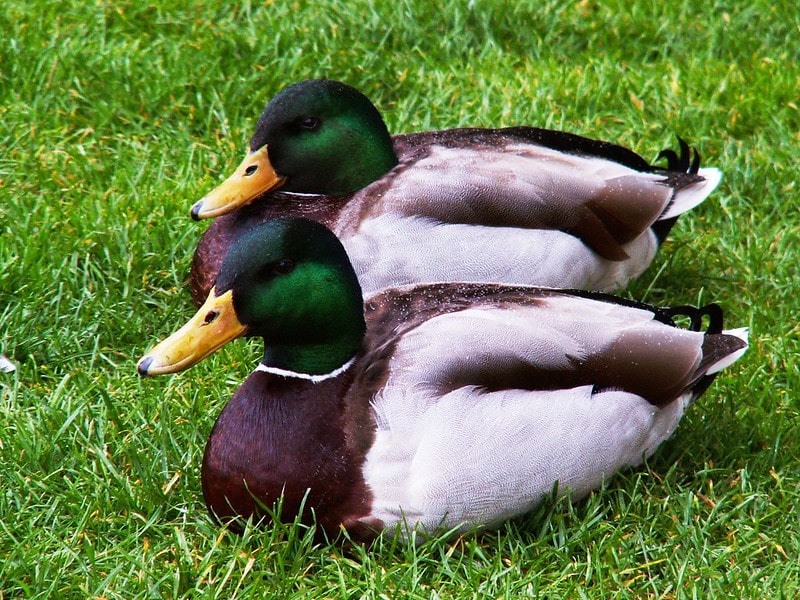
Random Facts
36. The Duck Test implies that anyone can identify unknown objects by observing their characteristics. In other words, if it looks, swims, and quacks like a duck, it is probably a duck. This flawed reasoning is a favorite among politicians.
37. In 1738, the French automaton maker Jacques de Vucanson made a mechanical duck. It could quack, eat grain, and excrete what seemed like bird droppings. The machine is one of many examples that pokes holes in the Duck Test.
38. Duck meat is an international delicacy known for its high amounts of protein, fat, and iron. Most recipes involve roasting to make the skin crisp and the meat tender.
. . . continue reading on the next page
